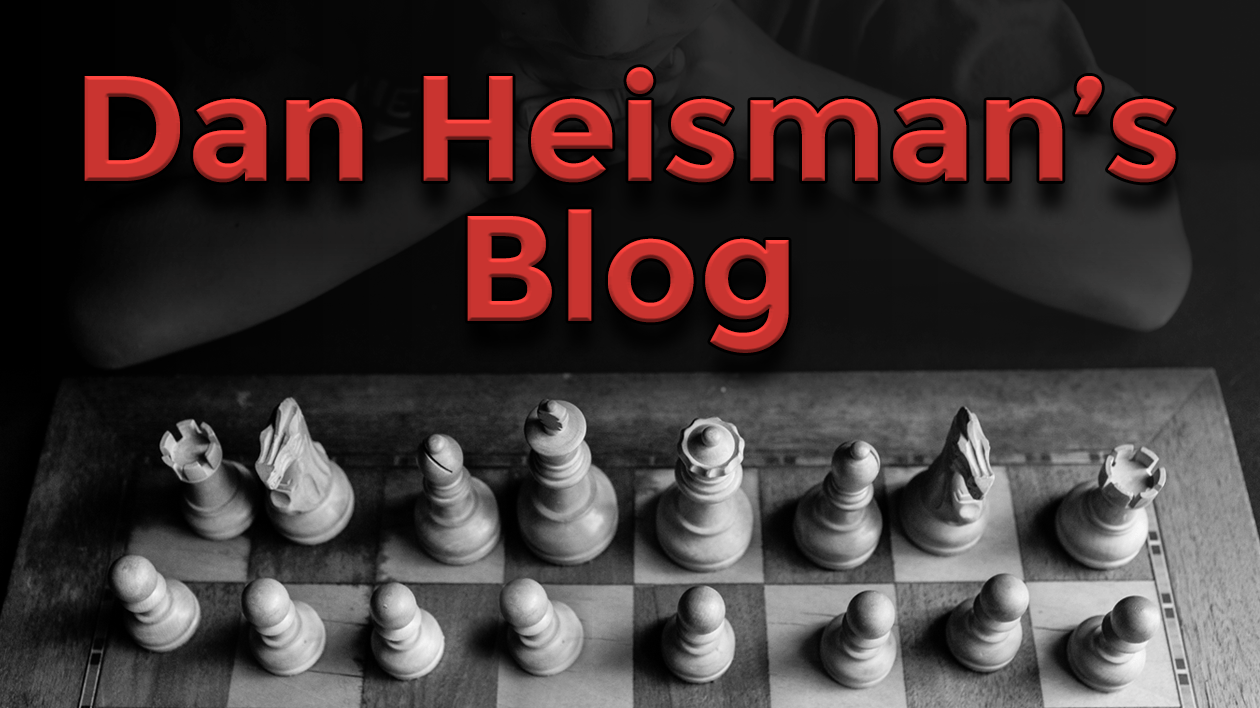
Hypermodern Development
I guess after writing a blog Classical Development (http://blog.chess.com/danheisman/classical-development) I felt a little obligated to write one on Hypermodern Development, even though that was not the original intention.
The easy definition of Hypermodern Development is "A method of getting all the pieces active in the opening that includes at least one fianchettoed bishop". The problem is that the Alekhine's Defense 1.e4 Nf6 is usually classified as Hypermodern even though Black does not have to fianchetto. So another definition is "An opening scheme that allows - but does not require - the opponent to set up a big classical pawn center and then tries to break it down." Both definitions are helpful in understanding Hypermodern setups.
Why a fianchettoed bishop? Because the hypermoderns (primarily Richard Reti, Aron Nimzovich, and Julius Breyer) successfully argued that central control is more important than central occupation. So while in classical openings like the Giouco Piano a bishop on c4 is often successfully neutralized by a timely ...d5, both breaking up the White center and attacking the bishop, the same bishop on g2 would attack two central squares e4 and d5 (instead of just d5 after Bc4 or e4 after Bd3) while simultaneously suffering much less vulnerability (see my book Elements of Positional Evaluation: How the Pieces Get Their Power).
The effect on defense to 1.d4 and 2.c4 was most profound: the entire set of Indian Defenses with 1.d4 Nf6 2.c4 came into vogue upon the Hypermodern revolution around World War I. These include mainly the Nimzo-Indian, Queen's Indian, King's Indian, Gruenfeld, and Benoni. The first two usually (but not always) involve Black fianchettoing his queen bishop, while the latter almost always (some old Benoni's excepted) involve Black fianchettoing his king bishop with ...g6 and ...Bg7.
A simple example of a Hypermodern opening is the King's Indian Attack System for White which almost always, by definition, involves the following five moves (White's moves only):
The old main line of the Gruenfeld is a terrific example of a Classical Development for White, with Black using Hypermodern play to counter:
A striking example is the Classic Four Pawn Attack against the King's Indian Defense (or Benoni):
In general, the Hypermoderns won their battle with the Classicists, but that doesn't mean that Classic theory is wrong or fianchetto and flank attack of the center is better. It just means the Hypermoderns won the right to have at least equal say in how to balance a chess opening.
Instructional expertise suggests that to understand chess theory you should study chess history via famous games in players in the order in which chess evolved. The reason is that the evolution of chess theory is strikingly similar to the order in which individuals learn more and more sophisticated strategies in their personal play.
Thus first you would study the Classic, pre-Hypermodern players like Morphy, Steinitz, Tchigorin, Pillsbury, Lasker, Tarrasch, Marshall, Rubinstein, and Capablanca. Then you would move onto Hypermoderns Reti, Nimzovich, and Breyer (who unfortunately died young in World War 1) Third you would study games of the pre-World War II players who amalgamated those theories, such as Alekhine, Botvinnik, Euwe, Fine, Keres, Boleslavsky, and Reshevsky. Finally you could enjoy and learn from the many, many modern players who brought these theories into modern perspective. Too many to name, but for opening theory let me try Smyslov, Najdorf, Uhlmann, Fischer, Suttles, Larsen, Geller, Polugaevsky, Sveshnikov, Kramnik, and many more.
